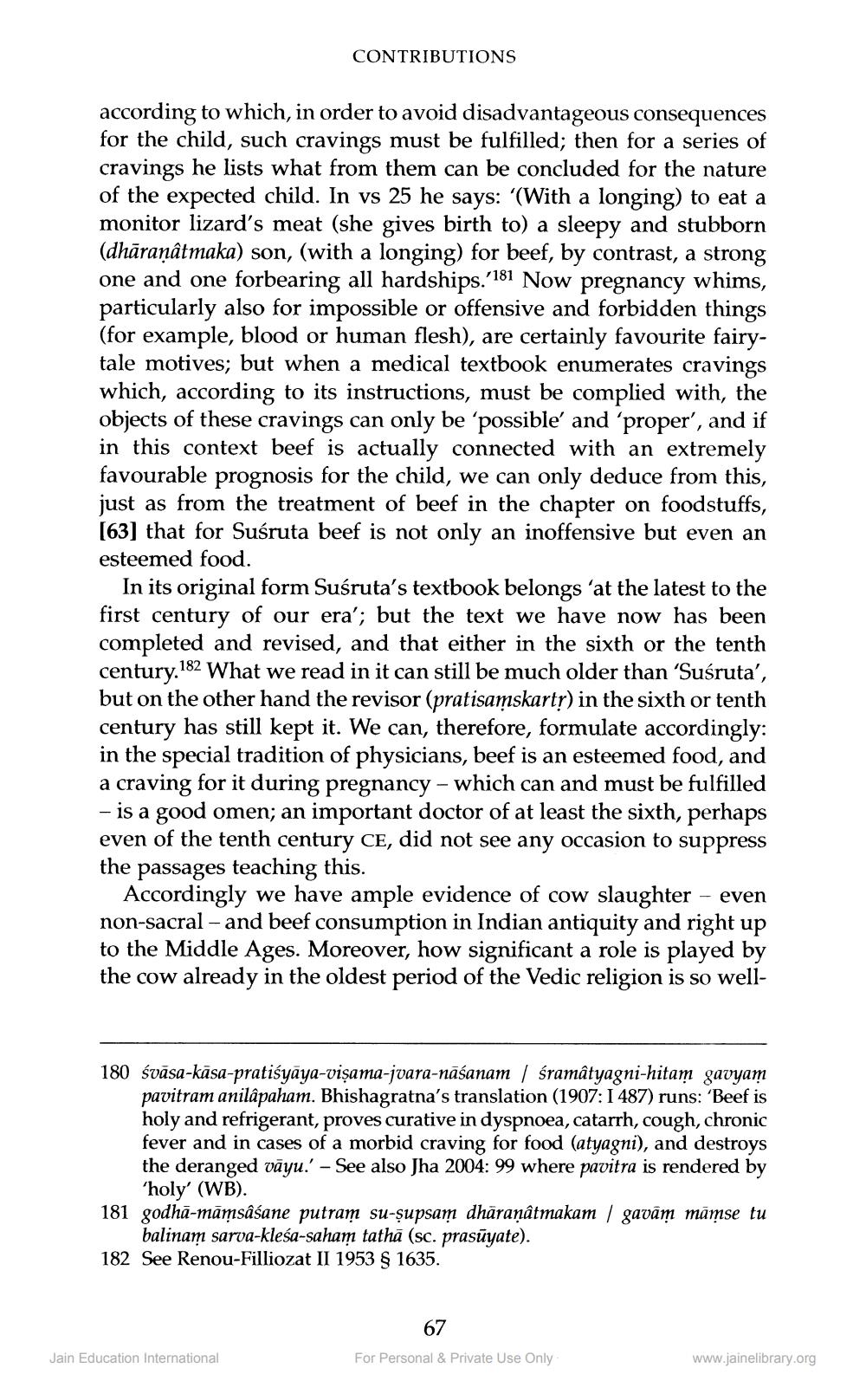________________
CONTRIBUTIONS
according to which, in order to avoid disadvantageous consequences for the child, such cravings must be fulfilled; then for a series of cravings he lists what from them can be concluded for the nature of the expected child. In vs 25 he says: '(With a longing) to eat a monitor lizard's meat (she gives birth to) a sleepy and stubborn (dhāraṇâtmaka) son, (with a longing) for beef, by contrast, a strong one and one forbearing all hardships.'181 Now pregnancy whims, particularly also for impossible or offensive and forbidden things (for example, blood or human flesh), are certainly favourite fairytale motives; but when a medical textbook enumerates cravings which, according to its instructions, must be complied with, the objects of these cravings can only be 'possible' and 'proper', and if in this context beef is actually connected with an extremely favourable prognosis for the child, we can only deduce from this, just as from the treatment of beef in the chapter on foodstuffs, [63] that for Susruta beef is not only an inoffensive but even an esteemed food.
In its original form Suśruta's textbook belongs ‘at the latest to the first century of our era'; but the text we have now has been completed and revised, and that either in the sixth or the tenth century,182 What we read in it can still be much older than 'Susruta'. but on the other hand the revisor (pratisamskartr) in the sixth or tenth century has still kept it. We can, therefore, formulate accordingly: in the special tradition of physicians, beef is an esteemed food, and a craving for it during pregnancy - which can and must be fulfilled - is a good omen; an important doctor of at least the sixth, perhaps even of the tenth century CE, did not see any occasion to suppress the passages teaching this.
Accordingly we have ample evidence of cow slaughter - even non-sacral - and beef consumption in Indian antiquity and right up to the Middle Ages. Moreover, how significant a role is played by the cow already in the oldest period of the Vedic religion is so well
180 śvāsa-kāsa-pratiśyāya-visama-jvara-nāśanam / śramâtyagni-hitam gavyam
pavitram anilâpaham. Bhishagratna's translation (1907: I 487) runs: 'Beef is holy and refrigerant, proves curative in dyspnoea, catarrh, cough, chronic fever and in cases of a morbid craving for food (atyagni), and destroys the deranged vāyu.' - See also Jha 2004: 99 where pavitra is rendered by
'holy' (WB). 181 godhā-māmsâśane putram su-şupsam dhāraṇâtmakam / gavām māmse tu
balinam sarva-kleśa-saham tathā (sc. prasūyate). 182 See Renou-Filliozat II 1953 S 1635.
67
Jain Education International
For Personal & Private Use Only
www.jainelibrary.org




